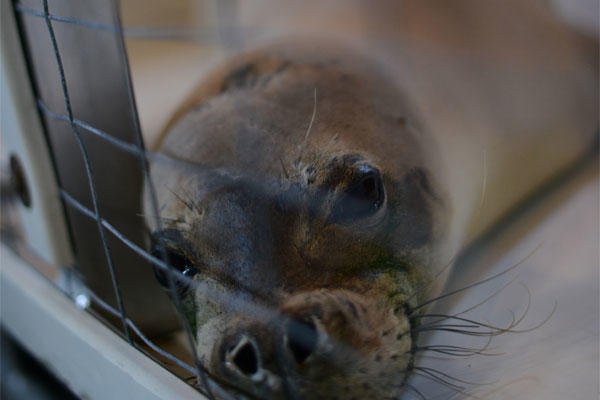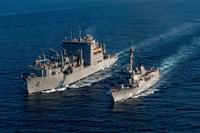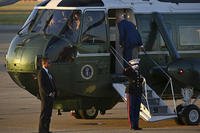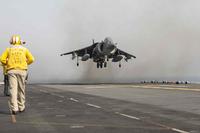HONOLULU — Coast Guard crews, working with the National Oceanic and Atmospheric Administration transported a Hawaiian monk seal from the Big Island to Oahu for urgent medical care, Feb. 1.
The HC-130 Hercules airplane crew from Coast Guard Air Station Barbers Point, Oahu, received the seal at Kona International Airport, Kailua-Kona, Friday morning.
“The juvenile male monk seal, I.D. tag K68, was observed exhibiting what appeared to be breathing difficulties, but a diagnosis was not possible in the field and it was necessary to bring the seal in to a care facility for a health assessment and treatment as needed. As of 1:00 pm on Friday, the monk seal had been transferred to the Waikiki Aquarium, and NOAA Fisheries veterinarians were preparing to conduct diagnostic procedures such as x-rays and ultrasound. NOAA Fisheries will provide an update early next week after a full health assessment has been completed.” said Dr. Jeffrey Walters, NOAA Marine Mammal Branch Chief.
The Hawaiian monk seal is one of the rarest marine mammals in the world. Part of the true seal family, they are one of only two remaining monk seal species.
Safeguarding marine mammals falls under the Coast Guard’s living marine resources mission, one of the service's 11 statutory missions. The nation’s waterways and their ecosystems are vital to the country’s economy and health. This includes ensuring the country’s marine protected species are provided the protection necessary to help their populations recover to healthy, sustainable levels.
The Coast Guard partners with NOAA on many living marine resources missions in Hawaii to protect endangered marine mammals including humpback whales. Operation Kohola Guardian involves coordinated joint Coast Guard, NOAA and State of Hawaii patrols of the National Marine Sanctuary during the peak Humpback Whale season months of January through March.
The 14th Coast Guard District is home to four Marine National Monuments and two National Marine Sanctuaries, more than any other region in the United States.


























